Navigating the Sea of Sameness: How to Improve Your University’s Market Position
April 2, 2025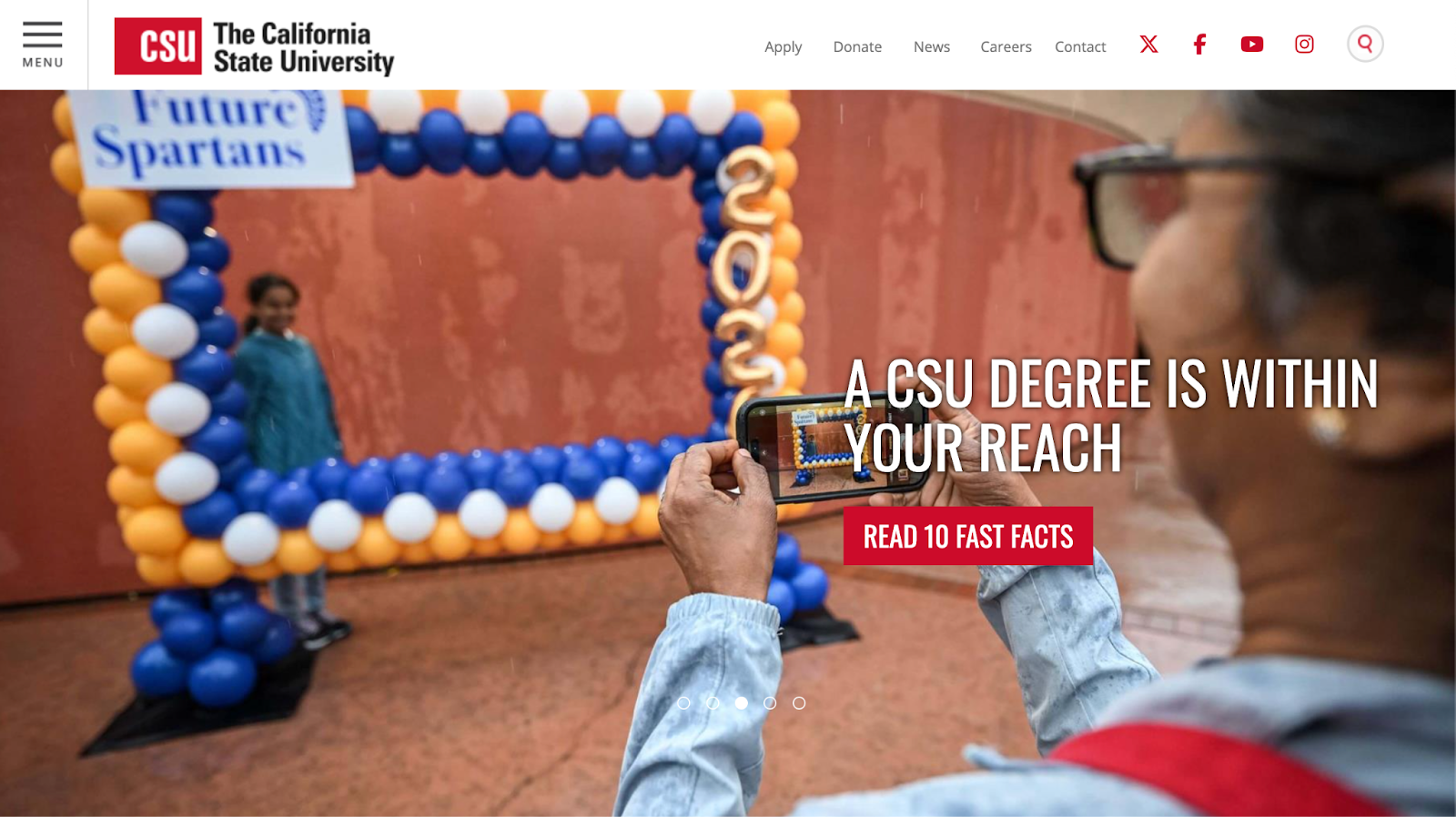

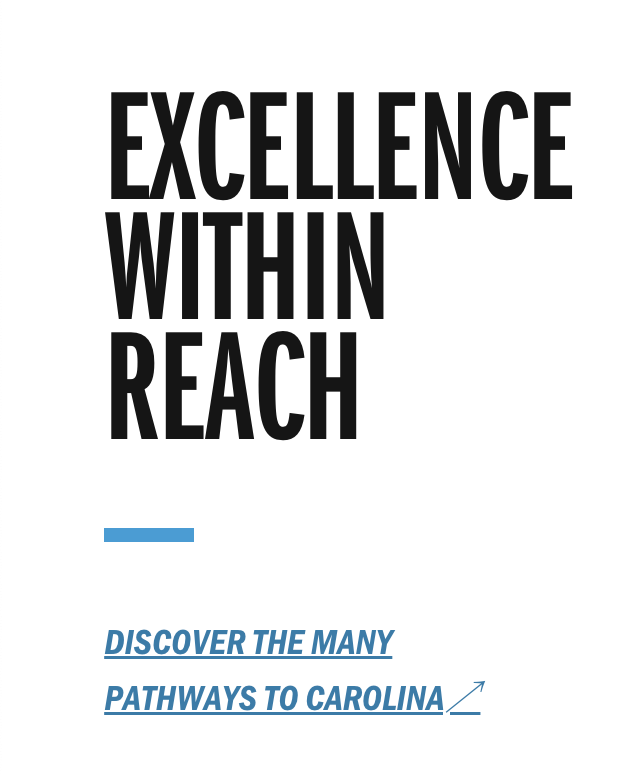
“A degree is within reach” is a nice sentiment—but what does it actually tell your audience about you and why they should choose you? Unfortunately, not much. Take a look at university websites and their pages, and you’ll begin to notice a pattern. The California State University website features a page reading, “A CSU Degree is Within Your Reach.” The University of North Carolina at Chapel Hill uses a similar phrase, “Excellence within Reach.” These lines sound appealing, but they don’t differentiate one institution from another.
Many universities today seem interchangeable, blending into a landscape of sameness. But what if you begin to think about your academic institution as a personality, a person with unique achievements, stories, friends, a distinct voice, and a recognizable style—what would that look like? With those qualities in place, you can begin to give your brand a well-defined identity and break through the noise.
If your strategy is to imitate #1, the best you can become is #2.
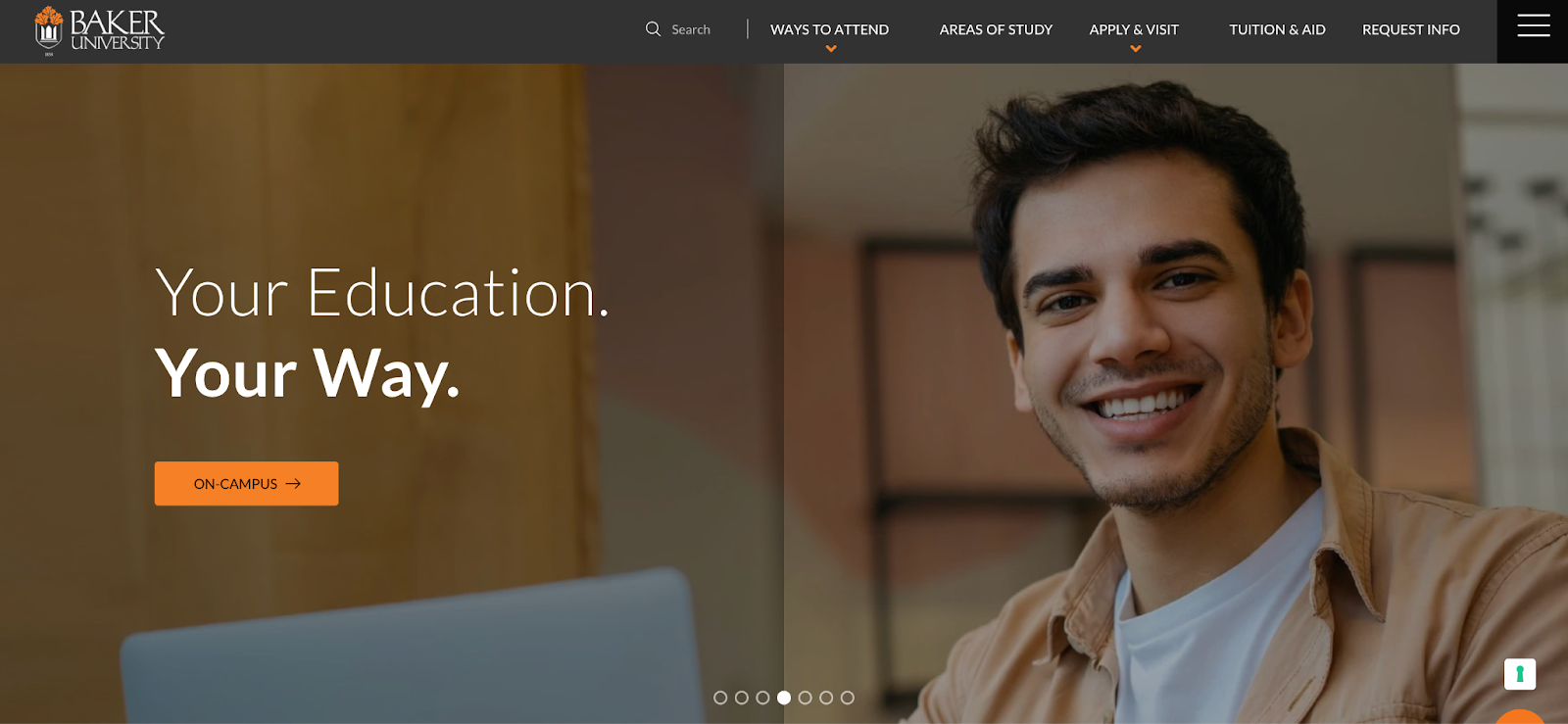
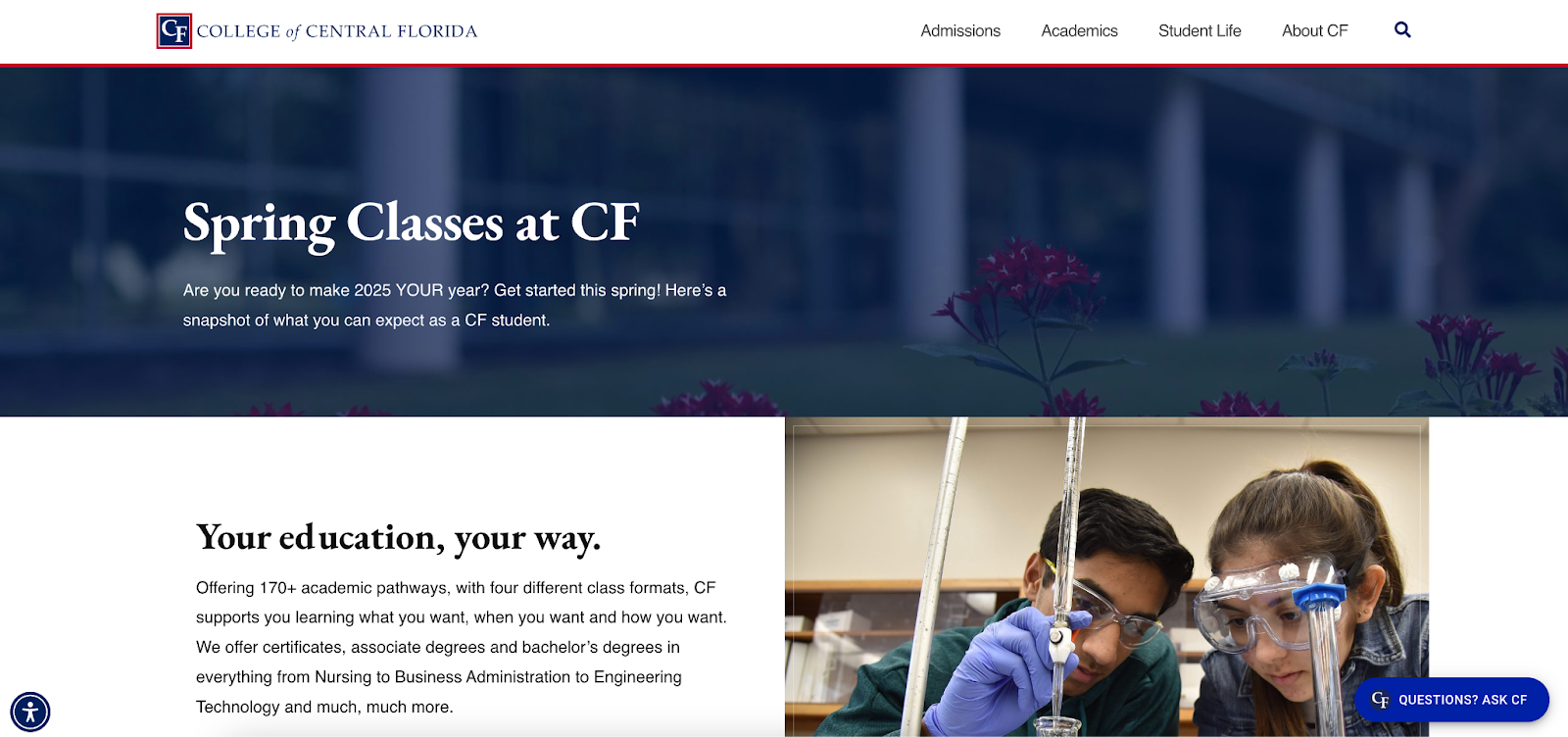
Authenticity is important to improving reputation. We understand you offer students an excellent education. You’re a land-grant university. You have a world-class faculty. You’re making an impact. The problem? Many other universities can claim these items too.
There’s nothing wrong in acknowledging these facets are important to your success. The issue lies in when higher education brands lean too heavily on templated phrasing and conventional visuals because they feel safe, professional, and broad enough to appeal to a wide audience. Baker University and College of Central Florida use an inviting, safe, but too-common phrase, “Your Education. Your Way,” on a static background. It’s a broad, feel-good statement that doesn’t necessarily give insight into each college’s experience. In playing it safe, schools risk becoming generic to the point of invisibility.
So, how do you work at improving market position as a university and make your institution truly distinctive?
What the Data Reveals About Your University
As they say, numbers never lie. If you want to sharpen your university’s market position, you need to start with data. Research helps you understand your current audience and what they care about.
Ask yourself:
- Why do students choose our institution over competitors?
- What programs or offerings set us apart from the rest?
- What are your students’ top concerns? (Affordability? Career outcomes? Campus culture?)
- How do alumni perceive the value of their education?
- How do faculty perceive the support of their department?
Understanding who you attract today and identifying your ideal audience for the future will guide how you redefine your positioning. It may take some surveying and questioning of current, past, or prospective audiences, but that work is key to better understanding. You may find your university has a strong reputation in niche areas. However, if those strengths aren’t at the forefront of your current messaging, you’re missing an opportunity to differentiate yourself.
Building a Brand Identity Based on the Facts
Once the numbers tell a story, the next step is building a brand identity that encompasses everything that sets you apart. A well-defined brand identity isn’t just a logo or tagline—it’s the foundation that guides how you communicate with your audience.
A strong brand identity includes:
- Brand positioning statement: A succinct, clear articulation of what consumers want and what your brand does best.
- Brand story: A compelling narrative in the university’s tone of voice that connects your position, mission, history, or impact.
- Messaging pillars: Core themes that shape how you talk about your institution’s strengths.
- Personality & tone words: The characteristics and language that define your school’s communication style.
- Photography: Visually communicates a brand’s identity, values, and story.
- Strong visuals: Logos, wordmarks, color palettes, graphic elements, typography, and more to build recognition, consistency, and emotional connections.
With these elements in place, your marketing efforts become more intentional. Instead of casting messages and visuals out into the ether, you can craft content that resonates deeply with your ideal audience and calls back to your brand positioning.
Determine Your Brand Position and Let It Lead
At the top of your brand identity pyramid sits your brand position. It’s not a tagline or a mission statement, but it’s a succinct couple of words that guide how you communicate, build relationships, and achieve goals.
When you discover this positioning statement, everything else should fall into place. From there, you can use your brand guide to shape how you talk about your school, how you show up visually, and how you tell your story in different campaigns.
Aim for Authentic Storytelling Over General Claims
Many universities claim the words “innovative,” “world-class,” or “impact-driven.” But these words mean little without proof. Instead of relying on buzzwords, use the real stories uncovered in your research to highlight what truly sets your institution apart.
If your research revealed that students choose your university for hands-on learning, speak to how these experiences translate for graduates. It takes a mix of creativity and authenticity to say what no one else is saying. For example, instead of saying, “We prepare students for success,” bring in student voices to illustrate the real impact of your programs. Instead of saying, “We have world-class faculty,” feature a professor whose research led the next big vaccine for a national epidemic. This level of authenticity resonates. It turns your brand from just another university into a place with real faces that others can connect with.
Rethink Your Visual Identity
On a second look, does your university website appear like every other higher-ed institution? Blue-and-white color schemes, aerial campus shots, students studying under trees? If you strip away the logo, your school should be immediately recognizable.
Your visual identity should be an extension of your brand’s personality and be flexible enough to resonate with different audiences—students vs. donors vs. presidents of peer institutions. That means choosing colors, typography, photography styles, and graphic elements that feel distinctive and true to your institution’s character. Whether that’s bold and modern or timeless and scholarly, your visual presence ultimately reinforces your brand positioning.
Who’s Doing It Right? Universities That Zig When Others Zag
While many institutions settle for broad, interchangeable messaging, these universities found ways to carve out distinct identities. They lean into their strengths, offer proof instead of platitudes, and communicate with clarity.
Here are some standout examples of schools that are breaking away from the sea of sameness by owning their narrative, getting specific, and making people pay attention.
University of Georgia (UGA)
Learning By Doing, Not Just Saying

UGA doesn’t just say it values a “learning by doing” approach to education—it embeds it into every aspect of its messaging. Rather than vague statements about career readiness, the university quantifies its hands-on learning opportunities and makes that impact tangible. As a student viewing this website, you may feel inclined to apply because you know that your education will go beyond the textbooks and prepare you for the real world.
University of Florida’s Herbert Wertheim College of Engineering
Innovation Without Buzzwords
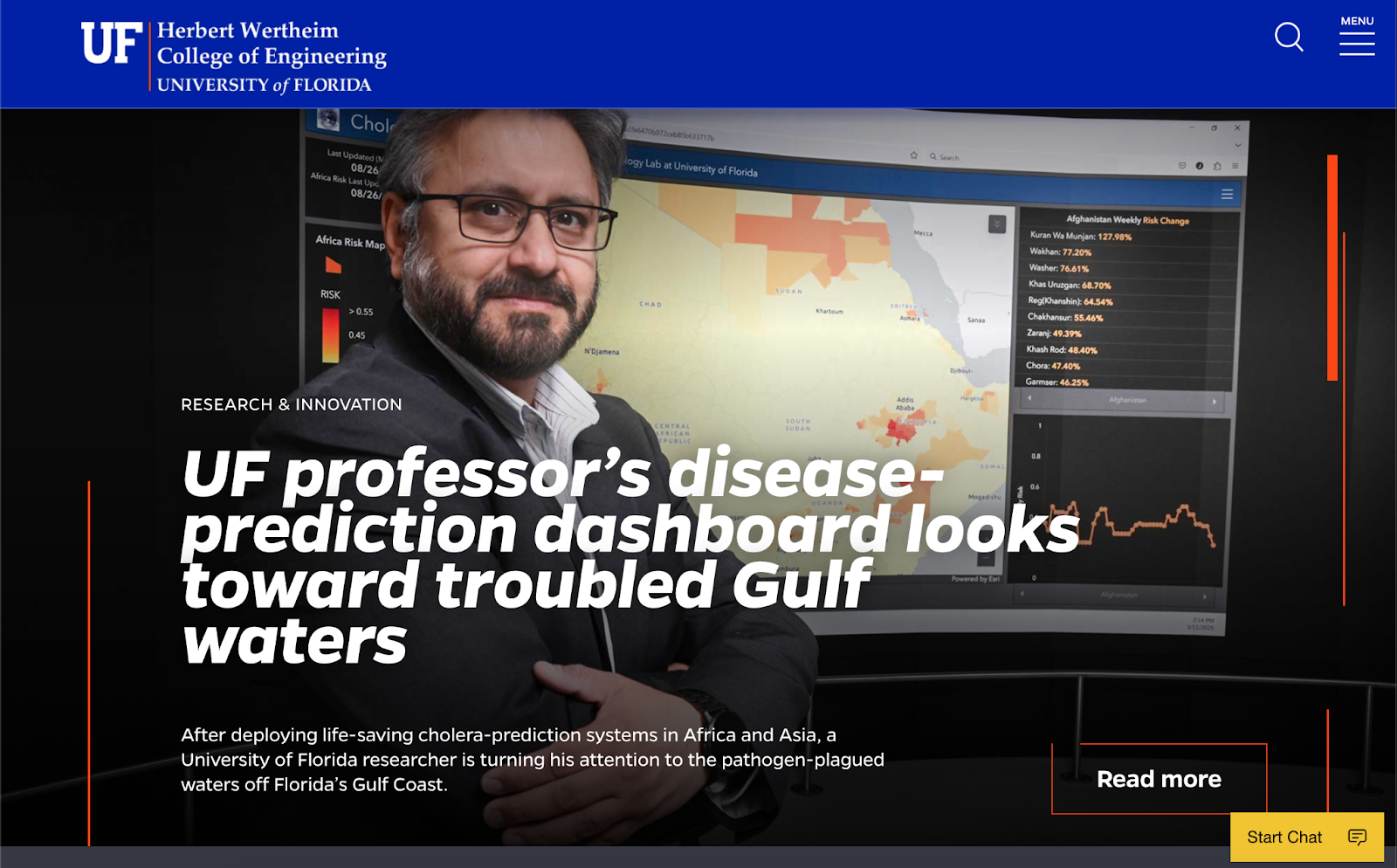
Many university colleges claim to be “innovative,” but UF’s Herbert Wertheim College of Engineering shows it. The homepage spotlights faculty achievements out in the world, like a predictive dashboard cleaning up pathogen-plagued waters along Florida’s Gulf Coast. Immediately, it offers proof of the college’s impact and creates a compelling case for potential students and partners without relying on industry jargon.
University of Notre Dame’s Mendoza College of Business
A Purpose Others Can’t Claim
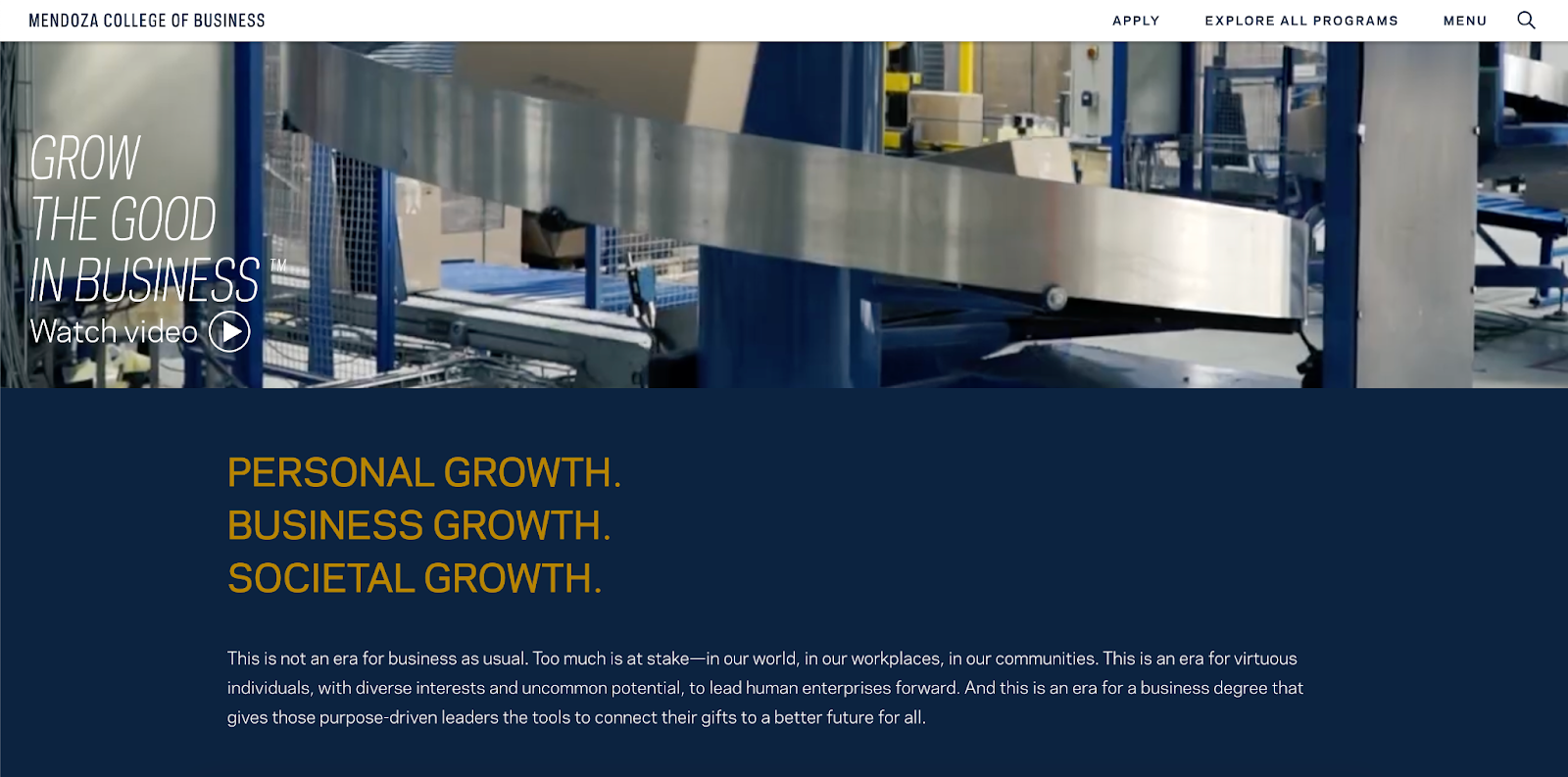
Notre Dame’s Mendoza College of Business stands out in its branding for quite a few reasons. “Grow the Good in Business” is a single, ownable statement that only Mendoza College of Business can claim—and that makes it even more legitimate through its trademark. Their philosophy surpasses the typical promise of career success. The college makes it clear that their degree transcends climbing the corporate ladder, it’s a tool for shaping leaders who will make an impact in the world. In their own unique voice, they call out to a new kind of business leader—one who sees success and purpose as inseparable.
Be the Orange in a Sea of Apples
Among the sea of apples, be an orange. And among the sea of sameness, be the university that dares to be the university that stands out by being true to what makes it distinct. The institutions that carve out a strong market position don’t chase trends or differentiation for its own sake, they lean into their authentic strengths, tell real stories, and consistently reinforce their identity. Audiences connect with that kind of honesty.
If your university entity wants to work with a marketing partner that specializes in developing authentic brand strategy and brand identities, talk with Frankel. We see institutions for what they are and how to make the world see them too. See what the research told us about UF’s College of Veterinary Medicine and how it guided our creative rebranding in this case study.

